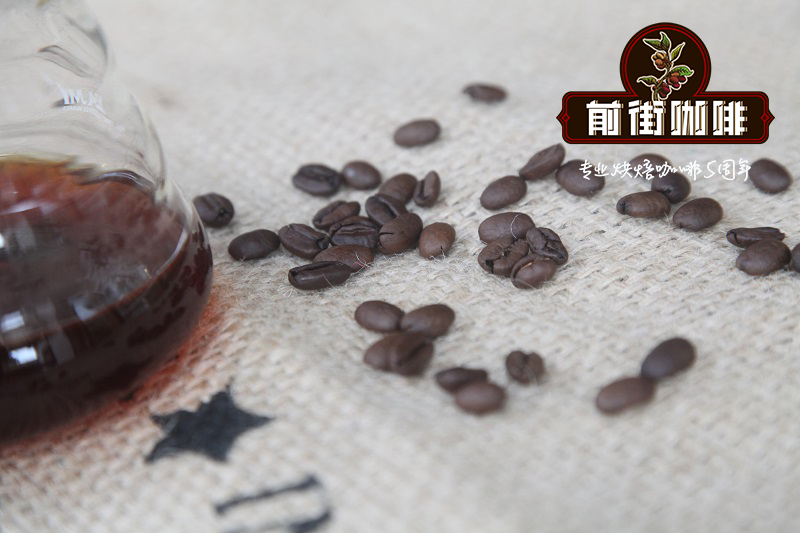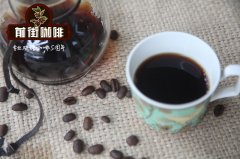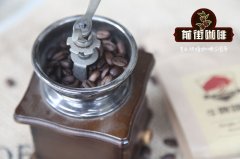Kenya AA FAQ three processing plants selected batches how to brew? Flavor description? Taste?
Selected batches of three processing plants of AA FAQ in Kenya

Kenya is very well known for its three processing plants.
To be responsible for the production of raw bean water treatment, the name of the water treatment plant is as follows:
Gatomboya Coffee factory
Mutwewathi coffee factory
Gakuyuini coffee factory
The first water treatment plant, Gatomboy, is well known in the Kenyan coffee industry.
Kenya has seven processing plants ranked as the best in the world (The World's Best Factories).
Gatomboy processing plant is located in Neri, the most famous boutique coffee producing area in Kenya.
(Nyeri) belongs to the Bali Bamboo Cooperative (Barichu Co-operative Society in Nyeri)
All, in the 2016 cup test record of Coffee Review Company of the United States, the beans produced by this processing plant
Baked by the baker and sent to Coffee Review for cup test, the score is as high as 96 points.
It is one of the seven well-known processing plants in Kenya, and these seven well-known processing plants are also ranked as the best in the world.
One of the raw coffee bean processing plants (The World's Best Factories).
@ now is the time for clearance in 2016 and entry of new beans in 2017, and prices are bound to be in chaos for the time being
When comparing the price C / P value, buyers should not covet the price difference of 10 yuan. There is already a price difference between the new bean and the old bean in 2016.
Gatomboy, one of the most famous processing plants in Kenya, is the best quality assurance.
Product name: Kenya AA FAQ (selected batches of three Gatomboya?Mutwewathi?Gakuyuini processing plants)
(Kenya AA FAQ Gatomboya?Mutwewathi?Gakuyuini selected)
Country: Kenya
Producer: collection of local small farmers
Varieties: Bourbon, SL28, SL34
Grade: Super AA FAQ
Altitude: 1500 to 2000 m
Treatment: washing treatment
Harvest time: NumberA
Flavor features: orange, ripe fruit, lemon, herbaceous, creamy, full mouth
Obvious sweetness, orange aroma, ripe fruit aroma, taste with greasy coating, Body thick,
The palate is rich and full-bodied, with moderate acidity, unique drupe aromas and a sweet finish.
Showing a strong smell of chocolate syrup.
Introduction:
No other country in the world attaches so much importance to the production of high-quality coffee as Kenya, so Kenya can be called the world.
The best model student in a coffee-producing country, because all Kenyan coffee must be handed over to the government after harvest
The established Kenya Coffee Bureau (Coffee Board of Kenya, CBK) unifies the acquisition and cup testing and grading.
Every Tuesday, the officially established Nenobi Coffee Exchange (the Nairobi Coffee Exchange) in the capital
As a result of this open system under the overall management of the government, more than 570000 of Kenya has been encouraged.
It is not difficult for a small coffee farmer to get a good price as long as he has good quality. In fact, what the Kenyan government did
There is still a lot of support for the effort, and the government provides a large number of small coffee farmers with the skills to grow good coffee.
Coach nearly 300 agricultural transportation and marketing cooperatives (a bit like Taiwan agricultural production and marketing classes) for better handling of raw beans
Kenya Coffee Agency (CBK) provides production, quality research, sales and even financial guidance to the coffee industry.
Focus and educational counseling. It has created the unparalleled charm of the quality and flavor of Kenyan coffee.
Coffee buyers around the world love it, and Kenyan coffee is also very popular in Taiwan's coffee market.
Surrounded by Mount Kenya (MT. KENYA, volcano) and Elgang Mountain (MT. Elgon), the more famous producing areas
There are Meru, Thika, Nyeri, Nakuru, Embu and so on. The topography of Kenya is complex and changeable, including plateaus, deserts,
Canyons, grasslands, coffee-producing areas spread over the central and southwestern and eastern plateaus 1000 to 2500 meters above sea level
Regions such as Mount Kenya in the middle, Aberdare Zone in the Aberdar region, and Nyansa in the west
(Nyanza), Kasii (Kasii), Bungoma (Bangoma), eastern Kerry state (Kericho)
, Nakuru (Nakuru) The treatment of raw beans is mainly water washing, and the classification is based on particle size.
And its actual value is determined by cup test. The highest grade coffee beans are AA (large granulated beans left on the 7.2mm sieve)
, Grade A (the second largest granulated beans left on the 6.8mm sieve), B (the medium granulated beans left on the 6.2mm sieve),
Grade C (all small granulated beans less than B), PB (oval granulated beans), and too light and too small TT
And T-grade beans. Grade An and B beans are mixed and exported, called AB. Kenyan authorities (CBK) on coffee beans
People who love coffee because of their high requirements, consistent packaging, good quality and good texture.
Never forget to enjoy a cup of Kenyan coffee.
The history of coffee cultivation in Kenya dates back to the end of the 19th world, and coffee trees were introduced from Ethiopia, a neighboring country to the north.
After the improvement of our own varieties, the common varieties are bourbon (Bourbon) and Ken (Kents).
There are four varieties: SL34, SL28, Typica and Riuri 11.
Now about 90% of the coffee varieties are SL34 and SL28. Batian, a new variety published in 2007, has not yet
Grow a lot. The vast majority of Kenyan coffee is grown organically without certification because of the use of improved planting techniques.
Chemical pesticides or herbicides are rarely used. All Kenyan high-end coffee is washed and sun-dried.
The low-grade products of non-washing treatment (non-washing 39% buni) are for local use only.
This batch of Kenya AA FAQ special batch coffee flavor features: with orange, ripe fruit, lemon flavor,
The taste of herbaceous and creamy fragrance is full and full, with obvious sweetness, orange, ripe fruit and greasy taste.
Coated, Body is thick, rich and full-bodied, with moderate acidity, unique drupe aroma and a sweet finish.
Showing a strong smell of chocolate syrup.
Important Notice :
前街咖啡 FrontStreet Coffee has moved to new addredd:
FrontStreet Coffee Address: 315,Donghua East Road,GuangZhou
Tel:020 38364473
- Prev

What is the treatment of golden honey in Sanhe producing area of Costa Rica? Variety and planting environment? Is it good?
What is the treatment of golden honey in Sanhe producing area of Costa Rica? Variety and planting environment? Is it good to cook? Costa Rica, the happiest country in the world, is also known as the Switzerland of Latin America, because it is the only country without an army. It is also the most developed country in Central and South America, which borders Nicaragua in the north, Panama in the south and the Atlantic and Pacific Ocean in the east and west. The plains are mostly distributed along the coast.
- Next

Kenyan coffee grading system on how to brew? Flavor description? What taste?
Kenyan coffee grading system on how to brew? Flavor description? What taste? The coffee grading system in Kenya was established under the policy of the government leading the management of quality and tutoring coffee farmers. After the coffee was harvested, the official unit of the Kenya Coffee Agency (Coffee Board of Kenya referred to as CBK) was established in 1933 in the capital Nairobi (N).
Related
- Detailed explanation of Jadeite planting Land in Panamanian Jadeite Manor introduction to the grading system of Jadeite competitive bidding, Red bid, Green bid and Rose Summer
- Story of Coffee planting in Brenka region of Costa Rica Stonehenge Manor anaerobic heavy honey treatment of flavor mouth
- What's on the barrel of Blue Mountain Coffee beans?
- Can American coffee also pull flowers? How to use hot American style to pull out a good-looking pattern?
- Can you make a cold extract with coffee beans? What is the right proportion for cold-extracted coffee formula?
- Indonesian PWN Gold Mandrine Coffee Origin Features Flavor How to Chong? Mandolin coffee is American.
- A brief introduction to the flavor characteristics of Brazilian yellow bourbon coffee beans
- What is the effect of different water quality on the flavor of cold-extracted coffee? What kind of water is best for brewing coffee?
- Why do you think of Rose Summer whenever you mention Panamanian coffee?
- Introduction to the characteristics of authentic blue mountain coffee bean producing areas? What is the CIB Coffee Authority in Jamaica?

